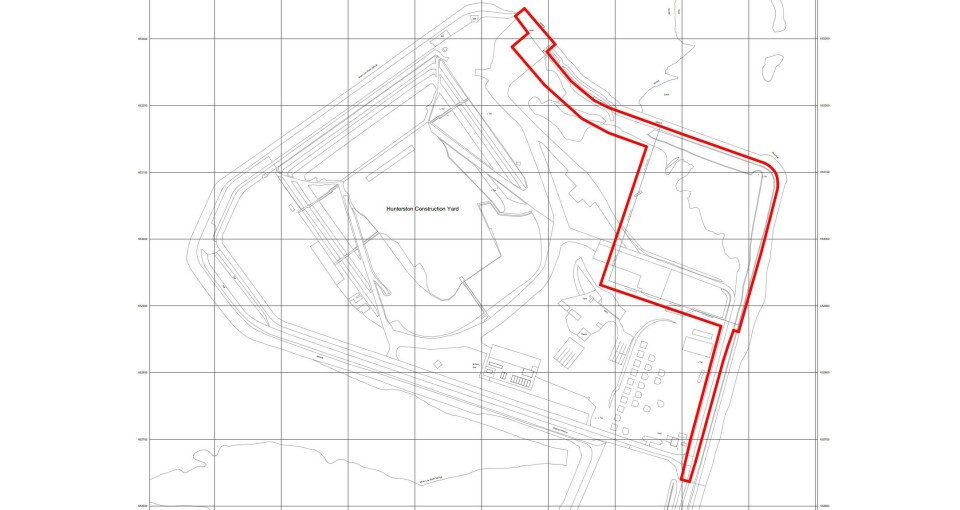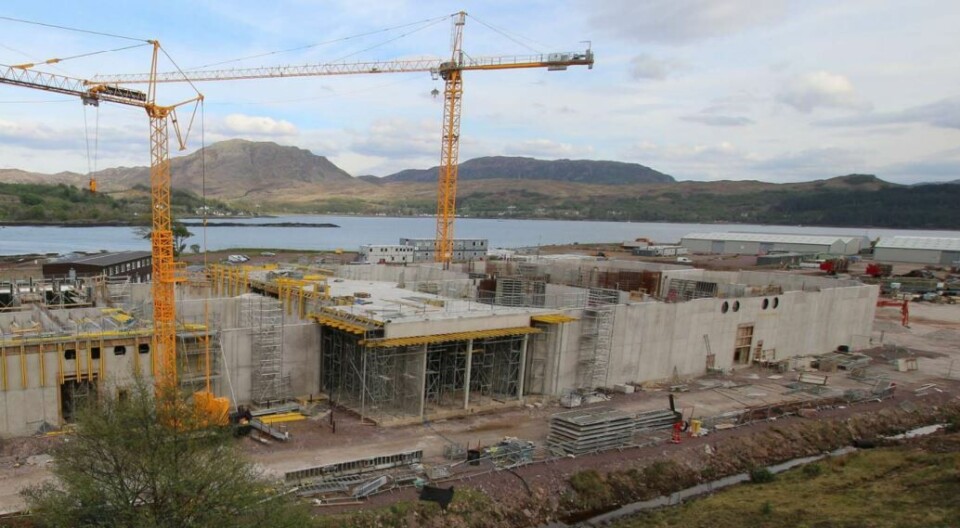
Bakkafrost chooses Hunterston for second large smolt facility
Salmon farmer to consult community councils and public before making planning application
Salmon farmer Bakkafrost Scotland is seeking to build a recirculating aquaculture system (RAS) smolt facility on industrial land at Hunterston in North Ayrshire.
The facility would be the second of three RAS plants the company plans as part of its strategy to produce 18 million large post-smolts annually to improve fish health and performance. Construction of the first facility, at Applecross in Wester Ross, is already well advanced.
The smolts, with an average weight of 500 grams, would be more robust than the smaller smolts Bakkafrost currently stocks at marine sites and would spend less time exposed to the challenges farmed fish can face in pens, such as sea lice, blooms of algae and micro jellyfish, and amoebic gill disease.
Bakkafrost Scotland's Faroese owner, Bakkafrost P/F, has had success with large smolts in the Faroe Islands is hoping to repeat that in Scotland.
Access for wellboats
The site at Hunterston Port and Resource Centre (PARC) on the Clyde coast is near Hunterston nuclear power station and has access for wellboats that would transport fish to marine sites.
Bakkafrost Scotland has not yet lodged a planning application for the smolt facility but its planning consultancy, McInally Associates Ltd, has issued a Proposal of Application Notice that provides community councils and the general public with the opportunity of expressing an opinion on the proposals prior to the formal submission.
Staffed exhibitions
Staffed public exhibitions will be held over two days - on Wednesday 1 March between noon and 8pm at Fairlie Village Hall, Fairlie, Largs and on Thursday, 30 March (same times) at West Kilbride Village Hall - McInally Associates told Fairlie Community Council in a letter.
“Members of the project team will be on hand at the exhibitions
to explain the proposals in detail and answer any questions you may have,”
wrote the consultancy firm.
“Leaflets will be available for members of the public to make comments on the proposal. These will be analysed and a summary of the comments and how the applicant has considered them will be submitted with the planning application.”
Freshwater sources
A Bakkafrost Scotland spokesperson said: “Bakkafrost Scotland can confirm it is in the early stages of a planning application process in relation to a proposed recirculating aquaculture system (RAS) facility and has lodged a planning application notice (PAN) with North Ayrshire Council for the development at Hunterston Port and Resource Centre (PARC) on the Clyde coast in Ayrshire.
“The project would be the company’s second RAS facility in Scotland, and in line with our approach to the development of our existing site at Applecross in the Highlands, sustainability and state-of-the-art technology will be at the heart of the process. RAS is a land-based biosecure closed system. Our system uses freshwater from local sustainable land-based water sources, is highly energy efficient and will convert all waste produced to a renewable product.
“As part of our consultation programme, which is part of the PAN process, we are committed to engaging with key stakeholders to discuss the proposed development and at our public exhibition events will have members on our team on hand to collect feedback and answer any questions people may have.
“Community councils received communication about the PAN and subsequently an invitation to meet, as part of this process, and we plan to be taking part in their meetings over the coming weeks.”
Land secured
It is understood that Bakkafrost has secured the land for the smolt facility, subject to receiving planning permission, although the project has not moved forward as quickly as it anticipated.
“During Q1 2022, Bakkafrost secured the land for the construction of the second large hatchery in Scotland. Depending on the final surveys, construction of the next large hatchery is expected to commence in H2 2022,” said Bakkafrost in a market report published last May.
The company’s plans envisaged its second large hatchery to be operational by 2025 and the third, in the north of Scotland, by 2026.
























































